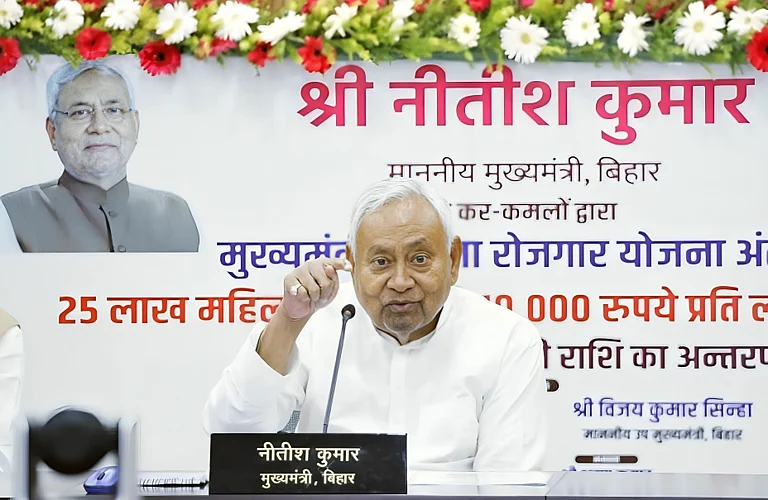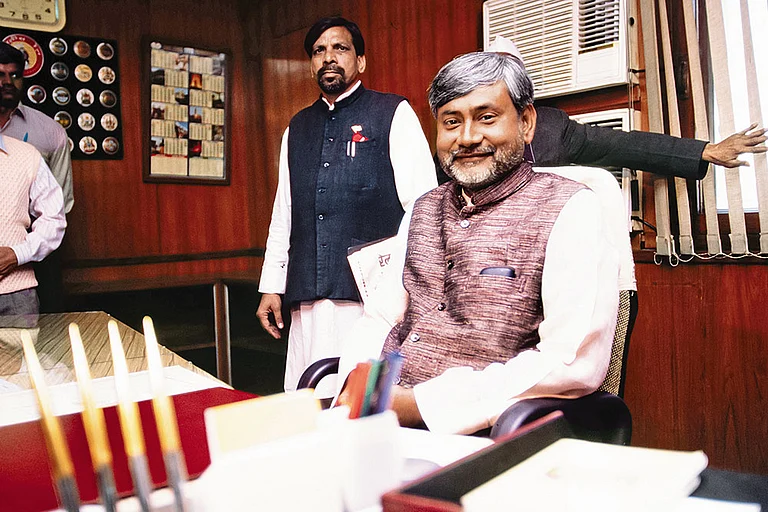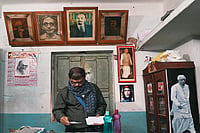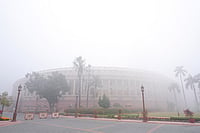
Bihar’s per capital income is the lowest in India.
Nearly half of Bihar’s workforce is employed in low income agrarian work.
Bihar’s literacy rates are lower than the national average, and there is a huge difference between the literacy rates of men (over 70 per cent) and women (just 51 per cent.)
Bihar is one of the poorest states in India. Low-wage work, high dependence on agriculture, and lack of development have left the state with the lowest per capita income in the country. According to the Reserve Bank of India’s “Handbook of Statistics on Indian States”, Bihar’s 2022-23 per-capita Net State Domestic Product (NSDP) was ₹38,278, less than half the all-India average.
Nearly half of Bihar’s working population is employed in farming. In 2022–23, 49.6 per cent of the people work in agriculture, forestry, or fishing, and only 5.7 per cent of the state’s population works in manufacturing. Approximately 32 per cent of citizens are employed in the service sector, but government data indicate that most hold low-paying jobs in the informal economy. With labour concentrated in low-productivity work, many households remain poor.
Outlook’s December 27, 2021, issue Bihar: Hierarchies of Poverty explored how the State has repeatedly failed the hard-working and resilient Biharis. Editor Chinki Sinha wrote about examining what makes Bihar so poor and what poverty in the poorest state feels like in Poverty Porn: Making Heroes Out Of People Just Struggling To Survive."
In "MPI: Yet Another Marker For India’s Poverty Problem," Ashutosh Sharma explored how to determine multidimensional poverty, its lacunae, and the politics behind various poverty indices.
The state’s poor human development indicators worsen the issue. The 2011 Census reported Bihar’s literacy rate at 61.8 per cent, with a stark difference between males and females. While 71.2 per cent of men are literate, only 51.5 per cent of women are. Low female literacy and workforce participation reduce the state’s productive potential and slow intergenerational mobility. Yamini Aiyar examines this in Education Is Key To Battling India’s Poverty Challenge.
MR Sharan explored How Caste Equations Continue To Shape Bihar’s Economic Fortunes.
Rampukar Pandit wrote a poignant story of a Bihari labourer whose son passed away while he was trapped in Delhi during the 2020 Covid lockdown, and his vows never to migrate for work, come what may. His story, Remember His Face?, can be read here.
Tanzil Asif’s Graveyard of Dreams in Bihar: The Story of Soni Kumari tells the story of three siblings who lost their parents within four days and their struggle for survival in Bihar.
In Harry And The Bihari: Return Of The Native, Ashwani Kumar wrote that Niti Aayog missed the larger picture of irreversible social revolution in Bihar.
Vishu Narayan’s Musahars: Never-Ending Tales of Deprivation and Exploitation explored the state of the Musahar community, which remains at the lowest rung of society and far removed from the grand schemes of successive governments and policymakers in Bihar.
Manoj Kumar Jha asked, “In what direction is Bihar’s double-engine train moving?” While the Niti Aayog report should have been a matter of collective shame, the Nitish Kumar government invariably looks for a shroud of denial, he wrote in Nowhere To Hide, Mr CM: Poverty Data Proves Nitish Kumar’s Policy Failure
And Umesh Ray wrote about how the government data was hiding the real story of Poverty in Bihar, while Manish K Jha’s Past, Present, Future: Bihar’s Tryst With Destiny asked the big question: What makes Bihar so poor?


























